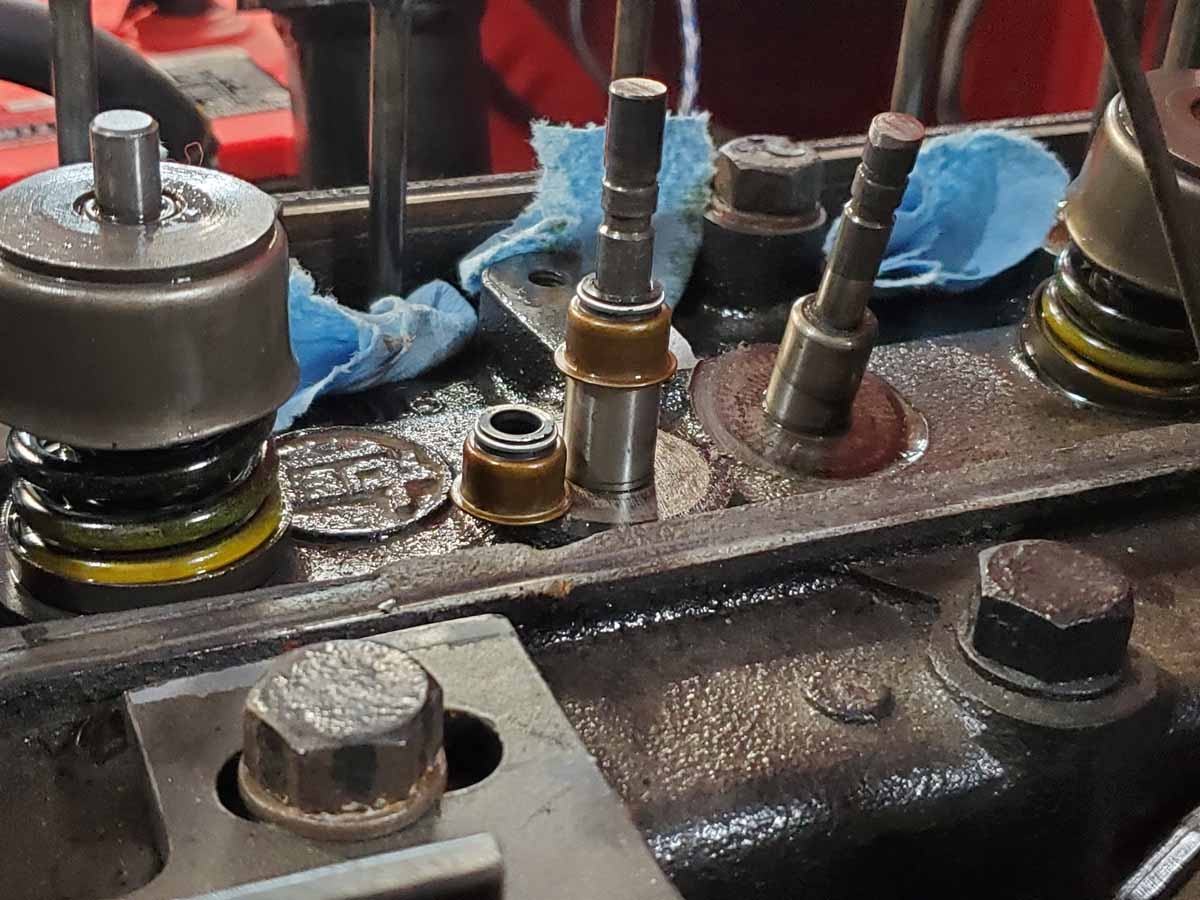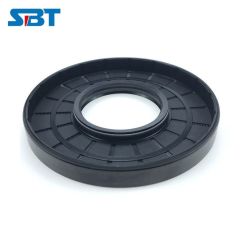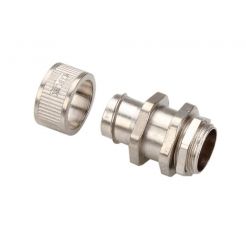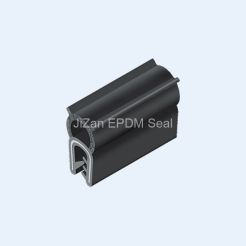22224-23500/22224-22000 Engine Valve Stem Seal
| Place of Origin |
Hebei, China |
| Brand Name |
CDI |
| Model Number |
22224-23500/22224-22000 |
| Color |
Customized color |
| Material |
FKM |
| LOGO |
1000pcs |
| Temperature |
45 ~ +260 |
| Packing |
Factory packaging, neutral packaging and custom packaging |
Lead time
| Quantity (pieces) |
1 - 3000 |
3001 - 5000 |
> 5000 |
| Lead time (days) |
16 |
27 |
To be negotiated |
Professional oil seal manufacturer
Packing
1.CDI packaging, neutral packaging 2.Plastic bag packaging, suction card packaging 3.Customizable packaging
FKM Material
120,000 km quality assurance
Product Description: Valve seal
The valve seal, also known as the valve stem seal or valve stem oil seal,is a crucial component of an engine's valve system. Designed to prevent oil from leaking into the combustion chamber, valve seals provide better fuel efficiency, reduce emissions, and protect the valve train.
Function:
1.0il Sealing: A primary function of valve seals is to prevent oil from entering the combusion chamber above the valve. By sealing the gap between the valve stem and the valve guide,thev prevent oil from leaking into the combustion process. This ensures the correct air-fuel mixture,improving fuel eficiency and reducing the release of harmful emissions.
2.Lubrcalon: Valve seals help in lubricating the valve stem,reducing friction between moving parts, and preventing premature wear. Proper lubrication ensures smooth opening and closing of the valves, promoting efficient engine operation.
3. Heat Dissipaion: The valve seal also assists in eficiently dissipaing heat from the valve stem,preventing overheating and reducing the risk of valve damage.
Detail display of CDI valve oil seal.
The stability and durability of the valve springs are essential for the stable operation of the engine, and the springs of the CDI valves are subject to international quality testing standards. In addition, the size of our valve oil seal is the same as the international standard. In terms of personalized service, you can customize the iron shell, the color of rubber, and the brand logo.
Profile view of CDI valve oil seal.
Valve seals are designed to be used in different types of engines for controlling oil consumption, and valve lubrication. The design and manufacturing of the seal is the key to ensure seal performance and longevity. A badly designed seal can result in engine oil flooding, which will cause a breakdown. At CDI Seals, we understand the importance of a well-designed industrial seal. We provide standard and custom valve seals to meet the needs of various engine and pump manufacturers.
VALVE STEM SEALS
CDI engineers analyze the OE design for every application. The OE design is tested and benchmarked. Based on the analysis, we determine the material used, considering the durometer (relative hardness) of the rubber, temperature requirements (both extreme heat and extreme cold), resistance to common oil types, tear-resistance and leak rate.
This type of analysis makes one thing clear, not all valve stem seals are created equal. Visually, a lower-quality seal may look very similar to a high-quality seal that’s appropriate for a given engine platform. However, a lower-quality seal with insufficient heat-resistance will harden and crack prematurely and will not work as intended.
You can count on CDI to use the right material for each application. CDI uses a variety of materials including nylon, PTFE, rubber, steel and synthetic rubber or some combination of these. FKM, fluoroelastomer, is used in many CDI valve stem seals for hotter-running, late-model vehicles. It is often combined with a metal jacket or covering that totally surrounds the FKM positive seal. FKM offers excellent resistance to both heat (up to 450°F) and abrasion.
How does the valve work?
Valve seals work by forming a tight barrier between moving elements, typically the valve stem and the valve guide. As the valve opens and shuts several times during operation, its seal must retain integrity under various pressures, temperatures, and mechanical motions. This is accomplished by precise engineering of both material composition and geometric design of the seal.
These seals are made of rubber, polytetrafluoroethylene (PTFE), and other polymers that are resistant to wear and chemical damage. The material used is determined by the individual application requirements, such as temperature resistance, compatibility with the fluids or gasses to be sealed, and durability.
In terms of design, most valve seals include a lip structure that securely wraps around the valve stem. This lip is designed to impart just enough pressure to the stem to form a seal while minimizing friction, which may otherwise cause premature wear or damage to either component. Some designs additionally use springs or other mechanical mechanisms to maintain continuous pressure around the stem regardless of the circumstances.
As valves are actuated (opened or closed), the seal must adjust dynamically to pressure fluctuations while maintaining its sealing qualities. This flexibility avoids leakage, which might jeopardize system efficiency or safety. Furthermore, by avoiding direct metal-to-metal contact between moving components through appropriate sealing procedures, wear over time is reduced, hence increasing total component lifespan.
What are the types of valves?
Positive Valve Seals:They are made of high-grade rubber or synthetic materials and are designed to fit tightly around the valve stem. They are used in engines to reduce oil consumption and keep oil from entering the combustion chamber. Positive seals are direct-contact seals that fit securely against the valve stem and provide perfect control over oil flow.
Deflector Valve Seals: Also called as umbrella seals, these are constructed of rubber or silicone and are intended to deflect oil away from the valve stem. They do not create as tight a seal as positive valve seals, but they are useful in older engines with less accurate oil management requirements. Deflector seals capture oil that drops down from the valve guide and divert it away from the stem.
What will happen if the valve oil seal is broken?
When the valve oil seal ages, it becomes loose and cannot effectively seal the valve, resulting in valve leakage. This makes the engine less fuel efficient, reduces the engine's power output, and reduces the car's ability to accelerate. At the same time, the aging of valve oil seal will also increase the emission of pollutants, causing pollution to the environment.
It will also cause the engine power decline and fuel consumption to increase significantly, and the related parts are damaged, especially the spark plug condition has decreased significantly. The valve oil seal has two main functions, one is to prevent the mixture of gasoline and air and the leakage of exhaust gas, and the other is to prevent the engine oil from entering the combustion chamber.
Finally, due to the valve oil seal damage, the oil will enter the cylinder to participate in combustion, resulting in carbon deposits, carbon deposits in the oil will make the engine lubrication worse, increase engine wear. Valve seal accessories introduction: valve rod seal is a kind of oil seal, generally by the outer frame and fluorine rubber vulcanization.
The symptom of automobile valve oil seal failure is oil leakage; The leakage of valve seal will accelerate the loss of oil; Blue smoke comes from the rear exhaust pipe. This causes oil to leak into the cylinder, forming a "burning oil" phenomenon. Determine the valve oil seal damage method is as follows: remove the intake manifold, you can find a black gelatinous substance on the top of the valve.
INSTALLATION TOOL
On some applications, the valve stem seals are interchangeable between the intake and exhaust valves and will look exactly the same. On applications which use different seals on the intake and exhaust valves, due to needing higher temperature material on the exhaust side or different design, the seals will be bagged and labeled appropriately.
Valve stem seals provide a defined metering rate of oil to the valve stem interface of internal combustion engines to lubricate the valve guide and minimize engine emissions. They are available for diesel and gasoline engines with and without boosting.
These signs indicate that your valve oil seal should be replaced
1. Conducting a Cold Engine Test
One of the best ways to tell if you have a faulty valve seal is to conduct a cold engine test. After your machine hasn’t run for a while — even overnight — the seal is now cool. Once you start the engine, the seal will contract. Damaged seals will leave a small gap. Leftover oil will then settle at the top of the valve cover head.
When you start the engine, you may also see blue-tinted smoke appear from the exhaust. If this happens, it means the residual oil is passing down through the damaged seal and into the combustion chamber. The bluish smoke, which is burned oil, signifies that the engine needs a new seal, even if it clears after several minutes of running the engine.
2. Increased Smoke Levels
Depending on the machines and equipment you use, smoke is often a common form of exhaust. However, when you start seeing it last longer than usual or appear a different color, you know a faulty seal may be the cause. The excessive smoke may also come in more consistent waves as the engine runs for long periods. Be aware of specific machine movements that cause more smoke than usual.
3. More Oil Consumption
If you notice you’re going through more oil than usual, it can be another indication of a bad seal. When oil leaks or burns at higher rates, the seal no longer controls the oil flow. Burning oil increases emissions and can contaminate the catalyst. Unburned fuel in the exhaust skyrockets the converter’s operating temperatures, which can cause the converter to overheat and create a blocked exhaust.
Make sure to check the engine’s oil level with a dipstick, and refer to your oil log to see if the fluid levels differ. You can make this part of your regular maintenance schedule. While oil leaks are often a clear warning of faulty valve seals, they may not always be visible, so don’t rely on this as a guaranteed warning because the oil could be burning off.
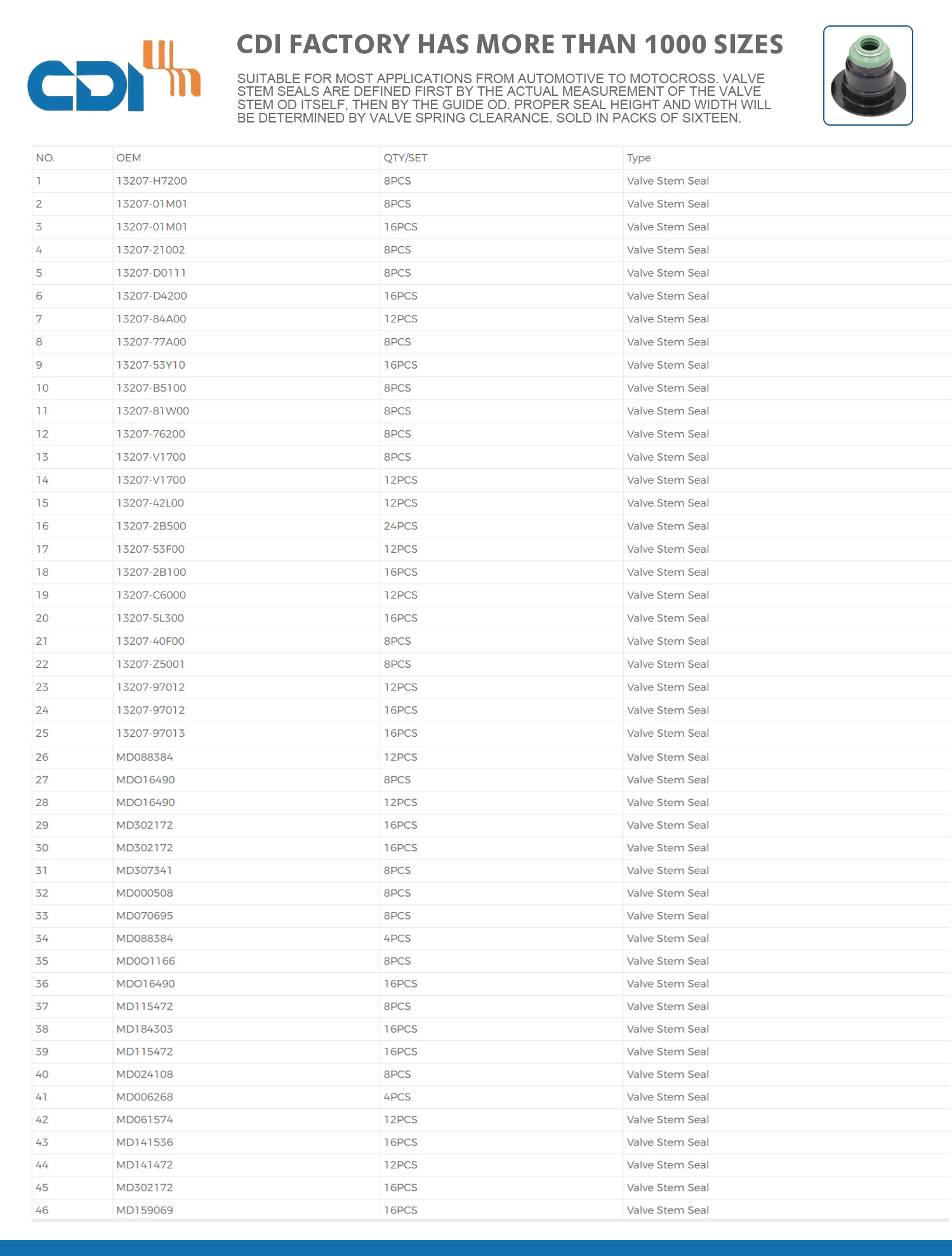
How to check whether the valve oil seal leaks
Step 1
Open the hood to the engine and check the oil level of your machine using a dipstick. Is it significantly lower compared to other times after a similar amount of usage? You can also check to see if there is any excess clearance between the valve stem and guide. Leaks are an obvious sign the valve stem seal has issues — but these aren't always present, even when the seal is failing.
Step 2
Start the engine and observe the exhaust. Is there a lot of smoke coming out of the pipe, and does it have a blue-gray tint? If so, the engine is burning leaked oil — which is why you may not see any leaks under the hood.
Step 3
Listen for odd noises like rattling or tapping as the engine idles. Any unusual sounds can indicate problematic valves.
Step 4
Check for engine and error lights that can indicate a problem. You can hook the machine up to a diagnostic reader to scan for different error codes. For example, valve seal and valve guide issues will read as specific codes, so reference the owner’s manual for assistance.
Step 5
If worse comes to worst, you will need to disassemble the engine and inspect the valve stem seals and other components. Relying on the professionals for this step may be best to ensure more parts do not get damaged throughout the process.
Why choose CDI Valve Seal
Fast valve stem seal replacements are just as essential as choosing a manufacturer that knows the vitality of a well-designed valve stem seal. Look for custom solutions that can fit your specific requirements if your machines are unique to your industry or operations.You will want to invest in top-tier solutions that are free of defaults. For example, CDI has an inventory of rubber seals that provide an elastomeric seal for your engines. We focus our valve seal portfolio on durable, temperature- and chemical-resistant solutions. We can also manufacture any customized rubber compound to fit your unique needs.
The company has professional production experience in industrial sealing systems, power steering seals and valve seals, and can provide personalized customized services from design to delivery according to the specific needs of customers. Whether it is samples or drawings provided by customers, we can accurately simulate and customize to meet your expectations to the greatest extent. Our OEM/ODM service model allows you to choose the right rubber material according to your brand image, tailor the color and specifications, and even carve a unique LOGO to show your unique style and brand value.


